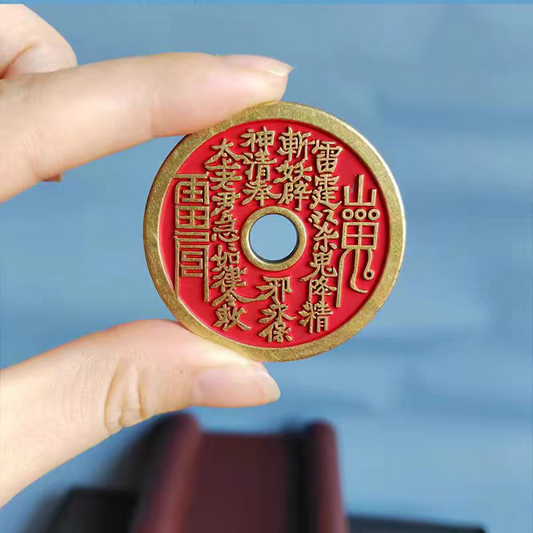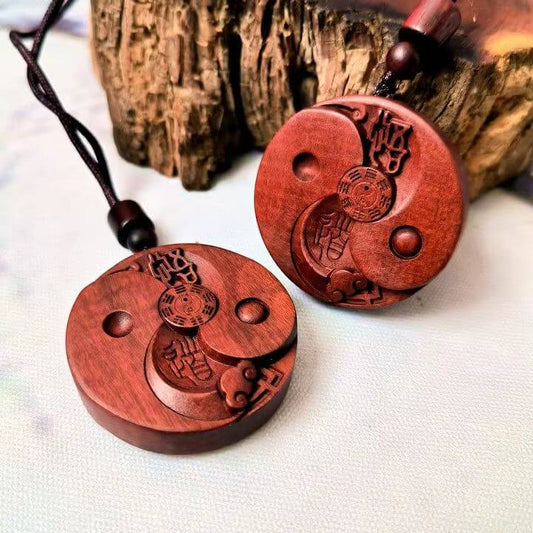
Introduction to Bazi Fortune Telling Part 2
paulpengShare
5. How to Arrange the Eight Characters (Bazi):
As mentioned earlier, Bazi, or the Four Pillars, is the first step in fortune-telling, which involves arranging the four pillars based on the year, month, day, and hour of the subject's birth. Since each pillar is composed of two heavenly stems and two earthly branches, it's also known as arranging the four pillars of the eight characters. Below are explanations of how to arrange the four pillars for the year, month, day, and hour:
5.1 Arranging the Year Pillar:
The year pillar represents the year of birth, expressed in the lunar calendar's heavenly stems and earthly branches. It's important to note that the boundary between the previous and next year is determined by the moment of the Start of Spring (立春 lì chūn) rather than the first day of the first lunar month. For example, if someone is born on the third day of the first lunar month in 1998, and the Start of Spring in 1998 falls on the eighth day of the first lunar month at 8:53 AM, then the year pillar for this person would be the Ding Chou year of 1997, not the Wu Yin year of 1998.
5.2 Arranging the Month Pillar:
The month pillar represents the season in which the person was born, expressed in the heavenly stems and earthly branches of the lunar calendar. It's important to note that the month's heavenly stem and earthly branch are not determined by the first day of each lunar month but by the occurrence of seasonal changes. The current lunar calendar, also known as the Xia Calendar, starts with the Tiger month (寅月 yín yuè) in January and ends with the Ox month (丑月 chǒu yuè) in December. The earthly branches in each month remain fixed each year, starting from the Tiger month and ending with the Ox month.
January: Tiger Month (寅月 yín yuè) February: Rabbit Month (卯月 mǎo yuè) March: Dragon Month (辰月 chén yuè) April: Snake Month (巳月 sì yuè) From Start of Spring to Excited Insects From Excited Insects to Clear and Bright From Clear and Bright to Start of Summer From Start of Summer to Grain Rain
May: Horse Month (午月 wǔ yuè) June: Goat Month (未月 wèi yuè) July: Monkey Month (申月 shēn yuè) August: Rooster Month (酉月 yǒu yuè) From Grain Rain to Lesser Heat From Lesser Heat to Start of Autumn From Start of Autumn to White Dew From White Dew to Cold Dew
September: Dog Month (戌月 xū yuè) October: Pig Month (亥月 hài yuè) November: Rat Month (子月 zǐ yuè) December: Ox Month (丑月 chǒu yuè) From Cold Dew to Start of Winter From Start of Winter to Major Snow From Major Snow to Minor Cold From Minor Cold to Start of Spring
Meanings of Solar Terms:
- Start of Spring in the First Lunar Month: "立" means the beginning, indicating the start of spring when everything revives. The weather begins to warm up, and all things start to renew, marking the beginning of agricultural activities. The Start of Spring falls on February 4th or 5th in the Gregorian calendar.
- Excited Insects in the Second Lunar Month: The thunder of spring begins to rumble, awakening insects and small animals hibernating in the soil. Insect eggs laid during the winter are about to hatch. This solar term indicates the increasing signs of spring and rising temperatures. Excited Insects fall on March 6th or 7th in the Gregorian calendar.
- Clear and Bright in the Third Lunar Month: This solar term indicates a warmer temperature, with plants starting to sprout, presenting a clear and bright scene in nature. Clear and Bright falls on April 5th or 6th in the Gregorian calendar.
- Start of Summer in the Fourth Lunar Month: This solar term signifies the beginning of summer, with hot weather approaching and agricultural activities entering the busy summer season. Start of Summer falls on May 6th or 7th in the Gregorian calendar.
- Grain Rain in the Fifth Lunar Month: "芒" refers to the fine hair at the tip of the grain husk. It's the time for harvesting wheat and planting rice in the north, marking the busiest period for farming. Grain Rain falls on June 6th or 7th in the Gregorian calendar.
- Lesser Heat in the Sixth Lunar Month: This solar term indicates the arrival of hot weather, with scorching temperatures. Lesser Heat falls on July 7th or 8th in the Gregorian calendar.
- Start of Autumn in the Seventh Lunar Month: This solar term indicates the end of the hot summer, with cool, refreshing autumn days beginning. Start of Autumn falls on August 8th or 9th in the Gregorian calendar.
- White Dew in the Eighth Lunar Month: This solar term indicates cooler weather, with water vapor in the air condensing into white dew on grass and trees at night. White Dew falls on September 8th or 9th in the Gregorian calendar.
- Cold Dew in the Ninth Lunar Month: This solar term indicates the start of winter, with the cold climate gradually intensifying. Cold Dew falls on October 8th or 9th in the Gregorian calendar.
- Start of Winter in the Tenth Lunar Month: This solar term indicates the end of the crisp autumn and the beginning of cold winter days. Start of Winter falls on November 7th or 8th in the Gregorian calendar.
- Major Snow in the Eleventh Lunar Month: This solar term indicates heavier snowfall. Major Snow falls on December 7th or 8th in the Gregorian calendar.
- Lesser Cold in the Twelfth Lunar Month: This solar term indicates the onset of the coldest period in winter, with frosts occurring. Lesser Cold falls on January 5th or 6th in the Gregorian calendar.
The heavenly stems in each month's pillar vary, unlike the fixed earthly branches, but they follow a certain pattern. Refer to the table of Year with Corresponding Month for more details.
Arrangement of Day and Hour Pillars:
5.3 Arranging the Day Pillar:
The day pillar represents the day of birth, expressed in the heavenly stems and earthly branches of the lunar calendar. The cycle of heavenly stems and earthly branches repeats every sixty days. Due to the differences in leap years, lunar months, and leap months, the heavenly stems and earthly branches for each day need to be checked using a perpetual calendar.
In the study of destiny, the day pillar starts from the Zi (子) hour at night and proceeds clockwise to the Hai (亥) hour, with each hour lasting two hours. The boundary between days is determined by the Zi (子) hour, which is at 11:00 PM in the evening. Before 11:00 PM is considered the Hai (亥) hour of the previous day, while after 11:00 PM is considered the Zi (子) hour of the next day. It's important to note this distinction and not consider midnight as the boundary of a day.
5.4 Arranging the Hour Pillar:The hour pillar represents the hour of birth, expressed in the heavenly stems and earthly branches of the lunar calendar. Each hour spans two hours in the lunar timekeeping system, resulting in twelve hours in a day.
Hourly Correspondence Table:
Zi (子) Hour: 23:00 - Before 1:00 AM
Chou (丑) Hour: 1:00 - Before 3:00 AM
Yin (寅) Hour: 3:00 - Before 5:00 AM
Mao (卯) Hour: 5:00 - Before 7:00 AM
Chen (辰) Hour: 7:00 - Before 9:00 AM
Si (巳) Hour: 9:00 - Before 11:00 AM
Wu (午) Hour: 11:00 - Before 1:00 PM
Wei (未) Hour: 13:00 - Before 3:00 PM
Shen (申) Hour: 15:00 - Before 5:00 PM
You (酉) Hour: 17:00 - Before 7:00 PM
Xu (戌) Hour: 19:00 - Before 9:00 PM
Hai (亥) Hour: 21:00 - Before 11:00 PM
In ancient times, each day was divided into twelve two-hour periods as follows:
Zi (子) Hour: Midnight
Chou (丑) Hour: Rooster Crow
Yin (寅) Hour: Dawn
Mao (卯) Hour: Sunrise
Chen (辰) Hour: Breakfast Time
Si (巳) Hour: Noon
Wu (午) Hour: Siesta
Wei (未) Hour: Sunset
Shen (申) Hour: Dinner Time
You (酉) Hour: Sunset
Xu (戌) Hour: Dusk
Hai (亥) Hour: Bedtime
The earthly branches in the hour pillar remain fixed, while the heavenly stems vary. Refer to the following Hour with Corresponding Day table for details.
Hour with Corresponding Day Table:
Additional mnemonic aid: "Five Rats Departure"
For Jia (甲) and Ji (己) years, Jia (甲) is the first.
For Yi (乙) and Geng (庚) years, Wu (戊) is the head.
For Bing (丙) and Xin (辛) years, look for Geng (庚) earth.
For Ding (丁) and Ren (壬) years, Ren (壬) in Yin (寅) is the proper route.
Where do Wu (戊) and Gui (癸) start? Jia (甲) in Yin (寅) is the best pursuit.
The usage of the table and mnemonic is similar to that of the Year with Corresponding Month method. For example, for a Bing (丙) day and Mao (卯) hour, the heavenly stem is Xin (辛), indicating Xin (辛) Mao hour.









